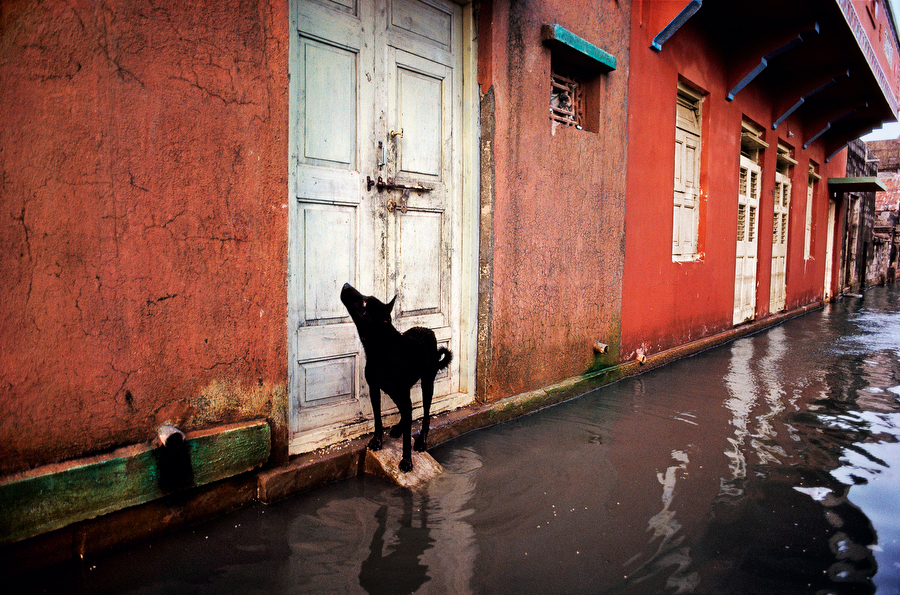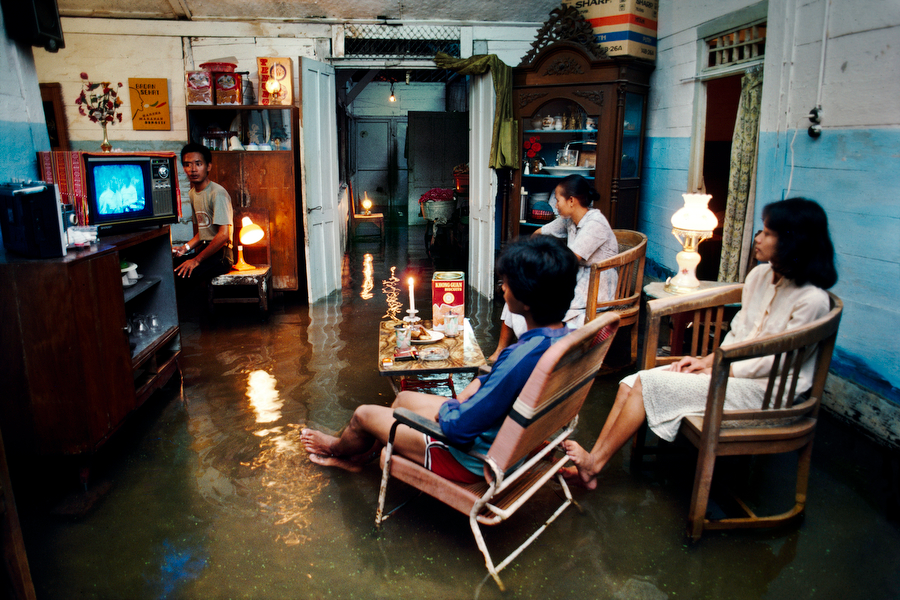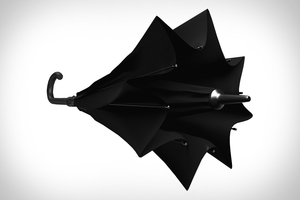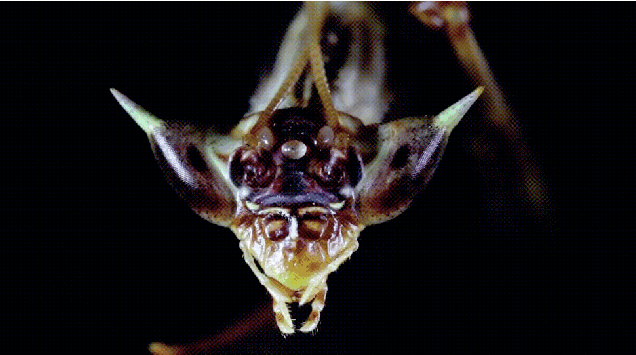Even though water slides combine the essential and the unavoidable—water and gravity—our species' survival does not hinge on these fixtures of summertime amusement. This hasn't stopped humankind from exploring and perfecting the form, as a perusal through the U.S. patent office's extensive list of water slide patent applications will show.
Within these applications exists a surprising subset of American art: drawings of men, women, and children enjoying water slides. These haunting depictions are so evocative, they deserve to be isolated from the inventions they were created to accompany.
Here are thirteen terrifying examples.
1. The Ecstasy is Tattooed on His Face
Patent Number: US 5213547 A
What Exactly Is Going On Here?: The euphoric gentleman pictured above is enjoying the "Method and Apparatus for Improved Water Rides by Water Injection and Flume Design." This patent is for a nozzle (or series of nozzles) that shoots water in order to push water slide riders at a higher velocity. Clearly it's working: this man has achieved nirvana.
2. Gleefully Sacrificing Oneself To the Shark Gods
Patent Number: US 20100137068 A1
What Exactly Is Going On Here?: This is a diagram of a "Water slide With Three-Dimensional Visual Effects." The invention requires that the slider wear a pair of "three dimensional goggles" in order to fully achieve the desired effect of maritime catastrophe.
3. Flush The Featureless Creature. End Its Misery
Patent Number: US 6354955 B1
What Exactly Is Going On Here?: This is a "water slide bowl," and it's about to swallow that blank slate of a man whole. Who hasn't had this nightmare before?
4. No One Can Hear Your Screams—The Water Park Feeds On Fear
Patent Number: US 6375578 B1
What Exactly Is Going On Here?: The men in this illustration are dueling on the "Two-way Interactive Water Slide," which allows riders to trigger sensors that spray onlookers, who then return the favor with hoses from their adjacent stations. You see, water parks are twisted playpens of rage. The man on the left is clearly in pain, and his torturer's lack of mercy is frightening. This is a wet and wild version of the Milgram experiment.
5. This is What True Love Looks Like
Patent Number: US 4196900 A
What Exactly Is Going On Here?: This is a "simplified support construction" for water slides, sturdy enough to support Brad and his girlfriend Debbie. They've been dating for two years and still manage to keep things fresh thanks to their local water park.
6. No Matter How Many Times He Uses The Slide, He Can Never Get Clean
Patent Number: US 5839964 A
What Exactly Is Going On Here?: This "Water Toy Release Mechanism" works like the ol' bucket over the door trick, except it drenches you in perpetuity thanks to a garden hose attachment and self-righting trough. The child in the illustration cares not for historical droughts, and he wastes gallons of potable water for fun. He has never been happier.
7. "My God, It's Full of Stars"
Patent Number: US 20090111592 A1
What Exactly Is Going On Here?: This person is traveling through the "Amusement Slide with Lighting Effect," and he or she is so happy, he or she has reverted to his or her most elemental form. A return to the womb, if you will.
8. It Craves Velocity; It Can Sense You
Patent Number: US 20140135137 A1
What Exactly Is Going On Here?:The faceless creature is careening through a "Water Ride Attraction Incorporating Rider Skill." He can control his raft and maneuver around the slide to trigger sensors that transmit data to the handheld devices of nearby millennials:
The faceless man is like a king to them.
9. Those Brave Enough to Traverse the Lane May Claim the Bowling Pins
Patent Number: US 5101752 A
What Exactly Is Going On Here?: This illustration depicts a girl gracefully riding a body board. If she looks locked in deep concentration, it's because this isn't your average body board; it "conforms to the contours of a user's body having a generally frustoconical perimeter that circumscribes at least two chambers that are connected for pivoting movement with respect to one another."
10. Marxist Theory: Let the Machine Absorb You
Patent Number: US 1648196 A
What Exactly Is Going On Here?: The image above is from a very early water slide patent, filed in 1925. "While I am aware that slides are used by bathers and swimmers," inventor Gabriel E. Rohmer writes, "no apparatus has come to my attention which as a constant stream of water spraying the slide surface of the apparatus." We may have Mr. Rohmer to thank not only for water slides, but for water slide patent illustrations as well.
11. He Likes it Here. It Feels Safe
Patent Number: US 20060252563 A1
What Exactly Is Going On Here?: The "Water Slide Audio Visual Entertainment System," in which the above child is sitting, is a rather complicated invention. To confuse things even further, please look at this out-of-context image from the same patent application:
12. He's Been Doing This All Day. The Neighbors Are Concerned
Patent Number: US 6361445 B1
What Exactly Is Going On Here?: The design for this waterslide may be simple, but the man shown using it contains multitudes.
13. Walking is Hard, Sliding is Easy
Patent Number: US 3923301 A
What Exactly Is Going On Here?: A man with double-jointed ankles is taking a serene cruise down a waterslide built directly into a hill. The entire scene is rather beautiful—this should be hanging in a museum.
 For months there is no rain, and then there is too much.
For months there is no rain, and then there is too much.


 Last Night the Rain Spoke to Me
Last Night the Rain Spoke to Me During the year I spent following the monsoon in a dozen countries, I learned to see it as a critically important event,
During the year I spent following the monsoon in a dozen countries, I learned to see it as a critically important event, 

































































































































